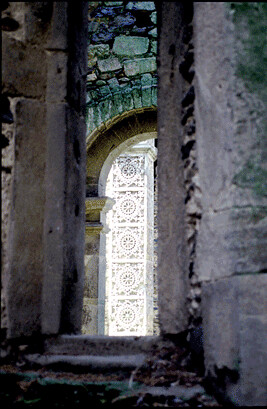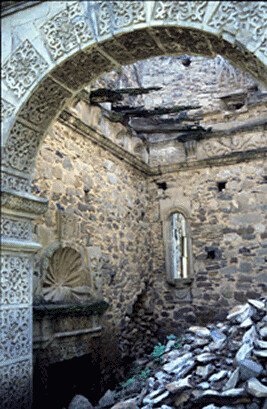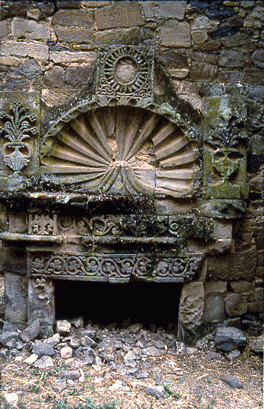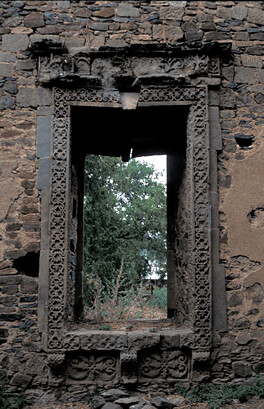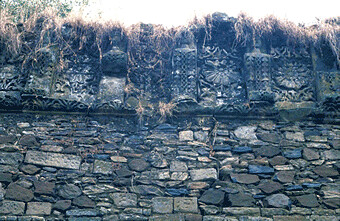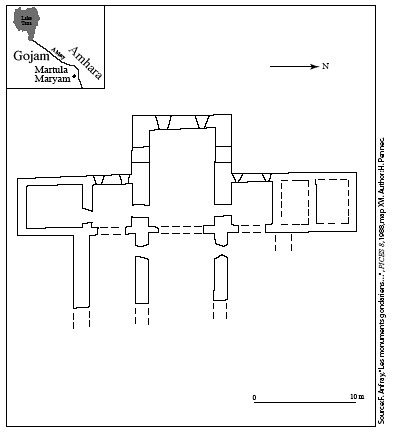| Home | Architecture | Art | Books & Maps | Manuscripts | Historia da Ethiopia | Credits & Contacts |
Martula Maryam Within the hilltop compound of the Martula Maryam Monastery, in the Gojami district of Mota, stand the tall ruins of the ancient rectangular church dating from the time of King Susneyos. The three-nave building was started by the Jesuit missionary Bruno Bruni and Brother Juan Martinez (the architect of the Jesuits) in 1628, on the site (and most probably using the materials) of an older church built by order of Queen Eleni in the late 15th or early 16th century and subsequently destroyed by the Muslim armies of Ahmad Graññ and by Oromo raiding activities.
Guzara castle and Dabsan's "house of the patriarch"
|
|
||||||||||
| MERTULA MARYAM - Plan of the Church | |||||||||||
|
| Home | Architecture | Art | Books & Maps | Manuscripts | Historia da Ethiopia | Credits & Contacts |

